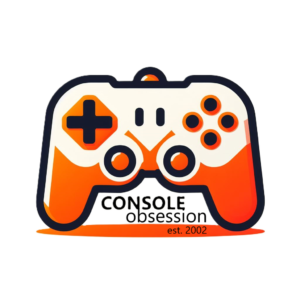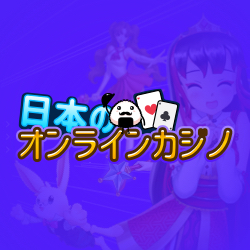Portal 2 Xbox 360 Review
Publisher – EA – Developer – Valve– Genre – Puzzle – Players – 1-2 – Age Rating – 12+ – Other console/handheld formats – PS3
The original Portal was just crying out for a more fleshed out and complete game. Don’t get me wrong, the first person puzzler was an incredible experience whilst it lasted, although it just didn’t last long enough, hence the reason it was included in the amazing value release that was The Orange Box. Now, here’s the follow-up that many of us wanted, released as a boxed, full price title.
Apparently, developer Valve was thinking about doing away with portals completely for this sequel, although fortunately they’re still in there. Those who played the original game will certainly feel right at home, but, just as fans envisioned it, there’s now much more variety in there and, with a bigger single player campaign as well as a separate co-op campaign, you’ll also be spending more quality time with this follow-up.
The sequel is set many years after the end of the original game. Main character Chell has been in stasis for all this time, but is now awake and, much like the rest of us, is ready for some more portal puzzle solving within the confines of the Aperture Science laboratory. The dialogue heavy story is superior to the original: there are more characters, better writing and just more going on. The witty script is also delightful and extremely silly, with the likes of Stephen Merchant, J.K Simmons and the returning Ellen McLain, as the sarcastically deadpan GLaDOS, delivering some truly excellent performances.


These cubes are new and allow you to redirect lasers, with the lasers naturally being often used in conjunction with the portals.
Mere minutes into the game it’s noticeable that Portal 2 has been treated to a larger budget (the above voice cast is one indication), new character Wheatley the AI sphere shows up and soon the building you are inside begins to collapse around you. It’s impressive, showing off some incredible physics, and the graphics throughout the game are much more attractive, interesting and varied than the test chambers that you found yourself in during the original game.
There’s also a lot more variation in the clever puzzles. The portal gun makes its triumphant return, but this time you’ll be feeding gooey substances through your created portals, riding trails of gravity as well as doing much of the stuff, such as using speed and momentum to hurl yourself forward, that made the original game the mini masterpiece that it was.
There’s a genius in the Portal games in which puzzle elements and the way in which they function are gently placed into the game, with later puzzles then combining elements that the developer expects you to have got to grips with, resulting in a solution that is often astonishingly clever. The bigger and more open areas of this sequel regularly makes for a tougher time, with the inclusion of a new zoom-in button soon proving to be something that is going to help out a great deal in these larger spaces.
So, the mechanic of entering one portal and coming out the other has been retained, as has the restriction of only placing your portals on certain walls, floors or roofs. As for new stuff, it’s the gooey substances that are the real highlights of the puzzle elements, though, with their use being key to completing a number of the puzzles. The blue gel allows you to gain extra height by springing off it, the orange gel is obviously very slippy, sending you hurtling forward the way it does, while the white gel can give you the freedom to use portals on areas that would otherwise restrict their use. The gooey substances may have their own individual perks although what they all share in common is that, whatever goo it is, it splashes all over walls and floors and makes the kind of mess that you see when you drop a can of paint, it is, however, an intentional and beautiful mess: the gooey physics are really quite something, with the eye catching splashes of orange being a particular favourite of mine.
Do yourself a favour and try and stay away from any walkthroughs. The beauty of Portal is all about player experimentation, and it’s certainly hugely satisfying to be attempting a test chamber for quite a long time and for the solution to suddenly formulate itself within your brain. Portal 2’s puzzles are logical but tricky at times, and you owe it to yourself to play the game as it was intended: working the puzzles out for yourself and, if the solution is eluding you, not giving in too early.
The single player campaign lasts a good six hours, which is twice as long as the two hour original. But wait, there’s more – a cooperative campaign lasts for around another six hours, which can be played locally or online. There’s a separate storyline, the two characters are test robots and both players are able to fire off their own portals, which the other player are able to make use of. If you’re playing online, you are able to instruct another player as to where you would like them to place their portals, and it’s also possible to begin a countdown timer in order to solve a puzzle that may require impeccable timing between the two players. There’s even some built-in emotes, allowing your robots to amusingly interact with one another – the miserable GLaDOS is never particularly enamoured by these actions, and she’ll let you know exactly what she thinks. All in all, cooperative is a brilliant addition that makes this sequel feel all the more like the fully fleshed out game that it is.
Perhaps if I’m honest, Portal 2 is not the most instantly re-playable game in the world (Valve are working on some downloadable content which is due for release in the summer, though), and loading times are a little longer than most would like, but this is still a truly excellent sequel that is witty, satisfying, clever, and bigger and bolder than the petite original game. If Portal was a mini masterpiece, then Portal 2 is one of mega proportions.
9/10








